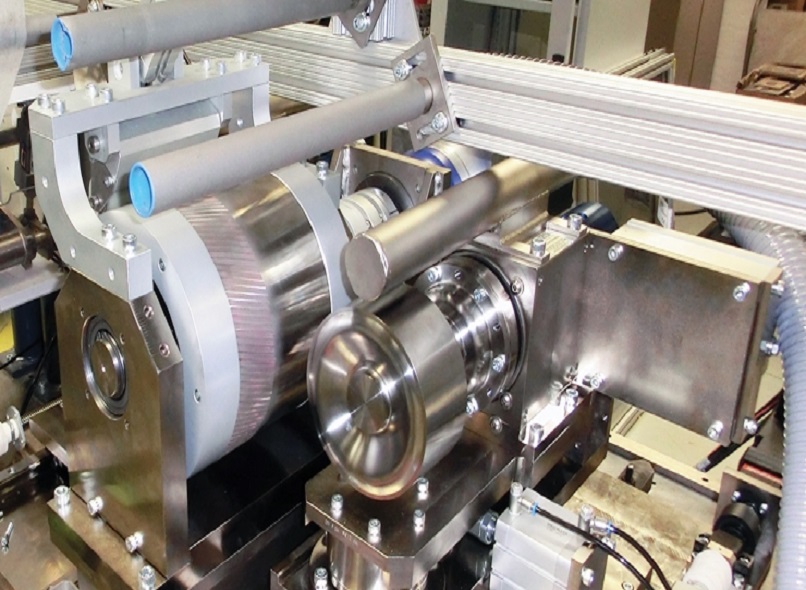Ultrasonic Welding: A Revolutionary Technique for Joining Nonwovens

The world of manufacturing and textiles is constantly evolving with new technologies. One such technology that has brought about significant changes, especially in joining nonwovens, is ultrasonic welding. Nonwovens are fabrics made from fibers, filaments, or films that are bonded together using mechanical, thermal, or chemical processes. They are used in various industries due to their versatility and unique characteristics.
In this article, we explore the world of ultrasonic welding and its remarkable applications in joining nonwovens.
Understanding Nonwovens
Before delving into the intricacies of ultrasonic welding, let's first understand what nonwovens are and why they are so important in the industrial and consumer landscape.
Nonwovens are used in diverse applications, including:
- Hygiene Products: Disposable diapers, feminine hygiene products, and adult incontinence products all rely on nonwovens for their softness, absorbency, and fluid distribution.
- Medical Textiles: Nonwovens are crucial in medical applications, from surgical gowns and drapes to wound dressings and face masks. They provide a sterile and breathable barrier.
- Automotive: Nonwovens are used in car interiors for upholstery, headliners, and insulation. They also play a role in engine filtration and airbags.
- Construction: Nonwovens are used as geotextiles, house wrap, and roofing materials for their water-resistant and insulating properties.
- Filtration: From air and water filters to industrial dust control, nonwovens are used extensively in filtration applications.
- Agriculture: Nonwovens are used for crop protection, weed control, and as soil stabilizers.
Ultrasonic Welding: A Game-Changer for Nonwoven Joining
Ultrasonic welding is a cutting-edge technology that utilizes high-frequency mechanical vibrations to create strong, durable bonds between materials. It is a solid-state joining process, which means that it doesn't rely on melting the materials to form a bond. Instead, it generates localized heat through friction, softening the materials and allowing them to fuse together.
The Ultrasonic Welding Process
The ultrasonic welding process involves several key steps:
- Material Preparation: The two nonwoven materials to be joined are aligned and placed between the ultrasonic horn and anvil.
- Application of Ultrasonic Vibrations: The ultrasonic welding system applies high-frequency vibrations to the nonwoven materials. These vibrations create friction at the interface of the materials, causing them to soften and bond together.
- Pressure Application: A controlled pressure is applied to ensure that the materials are held together firmly during the welding process.
- Cooling: After the vibrations cease, the materials cool down, solidifying the bond.
- Final Product: The result is a strong and reliable seam or bond between the nonwoven materials.
Advantages of Ultrasonic Welding for Nonwovens
The adoption of ultrasonic welding for joining nonwovens offers a multitude of advantages, making it an attractive choice for manufacturers:
1. Speed and Efficiency
Ultrasonic welding is exceptionally fast, making it ideal for high-volume production. It can create strong bonds within milliseconds, significantly increasing production rates.
2. Strong and Reliable Bonds
Ultrasonic welding creates robust bonds that are highly resistant to tension and shear forces. This ensures the durability and integrity of the final product, whether it's a surgical gown or an air filter.
3. Precision and Consistency
The process allows for precise control over the welding parameters, ensuring consistent quality and repeatability. Manufacturers can achieve seam widths as narrow as 0.5 mm.
4. No Consumables
Unlike adhesive bonding, ultrasonic welding doesn't require consumables like adhesives, solvents, or tapes. This reduces material costs and eliminates the risk of contamination.
5. Environmentally Friendly
Ultrasonic welding is an eco-friendly process as it generates minimal waste and doesn't produce harmful emissions or byproducts.
6. Versatility
Ultrasonic welding can be used with a wide range of nonwoven materials, including polypropylene, polyethylene, and polyester. This versatility makes it suitable for various applications.
Applications of Ultrasonic Welding in Nonwovens
The versatility and efficiency of ultrasonic welding have opened up numerous applications for nonwovens:
1. Medical Textiles
In the medical industry, nonwovens are used for surgical gowns, drapes, face masks, and wound dressings. Ultrasonic welding ensures sterile and secure seams in these critical applications.
2. Hygiene Products
Disposable diapers, sanitary napkins, and adult incontinence products rely on ultrasonic welding to create leak-proof and comfortable seals.
3. Filtration
Nonwoven materials are integral in filtration applications, including air filters, water filters, and industrial dust control. Ultrasonic welding ensures that these filters effectively trap contaminants.
4. Automotive
Nonwovens are used extensively in automotive interiors for their insulation and sound-dampening properties. Ultrasonic welding creates precise and durable seams in upholstery and headliners.
5. Geotextiles
In the construction industry, nonwoven geotextiles are used for erosion control, soil stabilization, and drainage systems. Ultrasonic welding ensures that these materials withstand harsh environmental conditions.
6. Agriculture
Nonwoven fabrics used in agriculture for crop protection, weed control, and soil stabilization benefit from the strong and reliable bonds created by ultrasonic welding.
Challenges and Considerations
While ultrasonic welding nonwovens is a powerful technology for joining nonwovens, there are some challenges and considerations to keep in mind:
1. Material Selection
The choice of nonwoven material is critical. While many thermoplastic nonwovens are suitable for ultrasonic welding, the specific material properties can affect the quality of the weld.
2. Design and Geometry
Designing the nonwoven components for ultrasonic welding may require adjustments to accommodate the welding process. This includes considerations for seam width and geometry.
3. Operator Training
Operators must be well-trained in using ultrasonic welding equipment to achieve the desired results consistently. Proper training is essential for maintaining the quality of the welded seams.
4. Equipment Maintenance
Regular maintenance is necessary to ensure that the ultrasonic welding equipment operates efficiently. This includes cleaning the welding horn and checking for wear and tear.
5. Energy Consumption
While ultrasonic welding nonwovens is efficient, it does consume energy. Manufacturers should consider energy-efficient equipment and practices to minimize operational costs.
Future Trends and Innovations
The future of ultrasonic welding in nonwoven applications is filled with exciting possibilities:
1. Smart Textiles
The integration of sensors and electronics into nonwoven fabrics for applications such as wearable technology and smart medical textiles is on the horizon. Ultrasonic welding can play a role in creating these high-tech textiles.
2. Sustainable Nonwovens
The demand for sustainable and biodegradable nonwovens is growing. Ultrasonic welding nonwovens will continue to be instrumental in working with these eco-friendly materials.
3. Miniaturization
Advancements in ultrasonic welding nonwovens technology may lead to the miniaturization of equipment, enabling precise welding in smaller and more intricate nonwoven products.
4. Advanced Quality Control
Integration with advanced quality control systems, including artificial intelligence and machine learning, may allow for real-time monitoring and adjustment of welding parameters.
Ultrasonic welding has emerged as a revolutionary technology for joining nonwovens. Its speed, precision, and versatility make it an invaluable tool in industries ranging from healthcare to automotive manufacturing. As the demand for nonwoven products continues to grow, ultrasonic welding nonwovens will play a pivotal role in shaping the future of these industries, providing strong, reliable, and sustainable solutions for diverse applications. The union of ultrasonic welding and nonwovens represents a compelling example of innovation driving progress in manufacturing and textiles.
See more: ultrasonic welders





